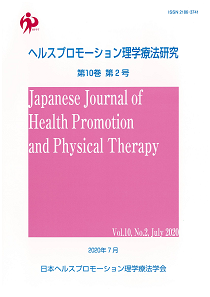Volume 10, Issue 2
Displaying 1-7 of 7 articles from this issue
- |<
- <
- 1
- >
- >|
ORIGINAL ARTICLES
-
Article type: original article
2020Volume 10Issue 2 Pages 55-60
Published: July 22, 2020
Released on J-STAGE: August 04, 2020
Download PDF (372K) -
Article type: original article
2020Volume 10Issue 2 Pages 61-65
Published: July 22, 2020
Released on J-STAGE: August 04, 2020
Download PDF (291K) -
Article type: original article
2020Volume 10Issue 2 Pages 67-71
Published: July 22, 2020
Released on J-STAGE: August 04, 2020
Download PDF (300K) -
Article type: original article
2020Volume 10Issue 2 Pages 73-79
Published: July 22, 2020
Released on J-STAGE: August 04, 2020
Download PDF (355K)
SHORT REPORT
-
Article type: short report
2020Volume 10Issue 2 Pages 81-84
Published: July 22, 2020
Released on J-STAGE: August 04, 2020
Download PDF (318K) -
Article type: short report
2020Volume 10Issue 2 Pages 85-89
Published: July 22, 2020
Released on J-STAGE: August 04, 2020
Download PDF (266K)
FIELD REPORT
-
Article type: field report
2020Volume 10Issue 2 Pages 91-94
Published: July 22, 2020
Released on J-STAGE: August 04, 2020
Download PDF (267K)
- |<
- <
- 1
- >
- >|
